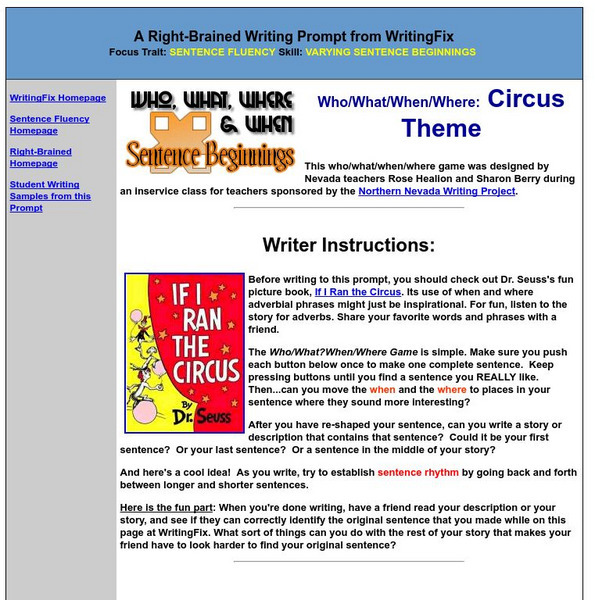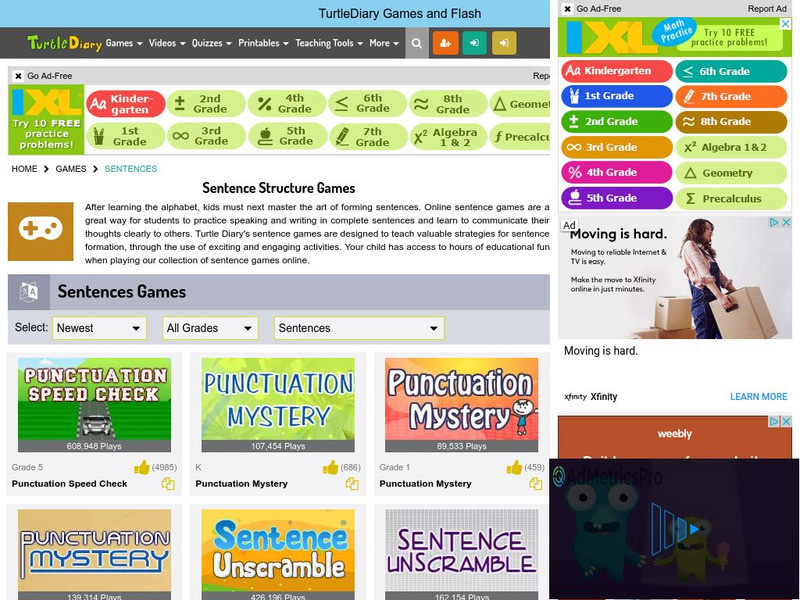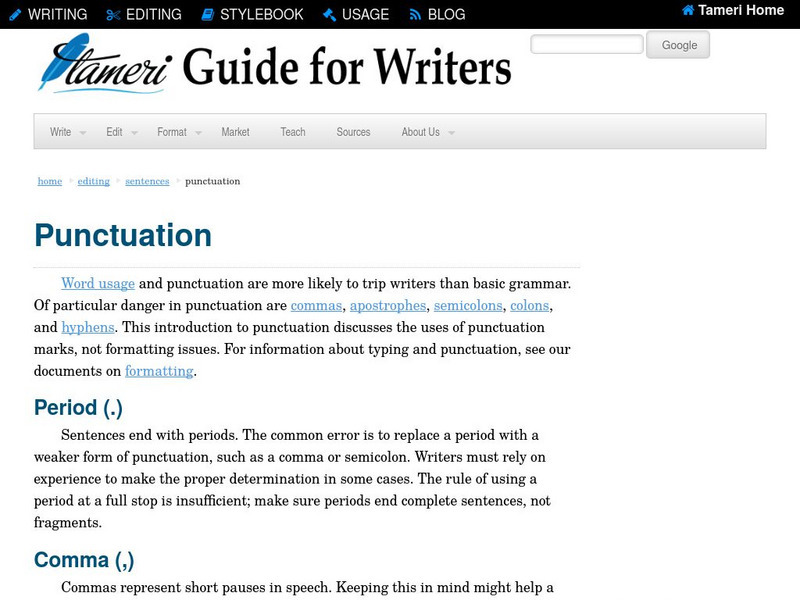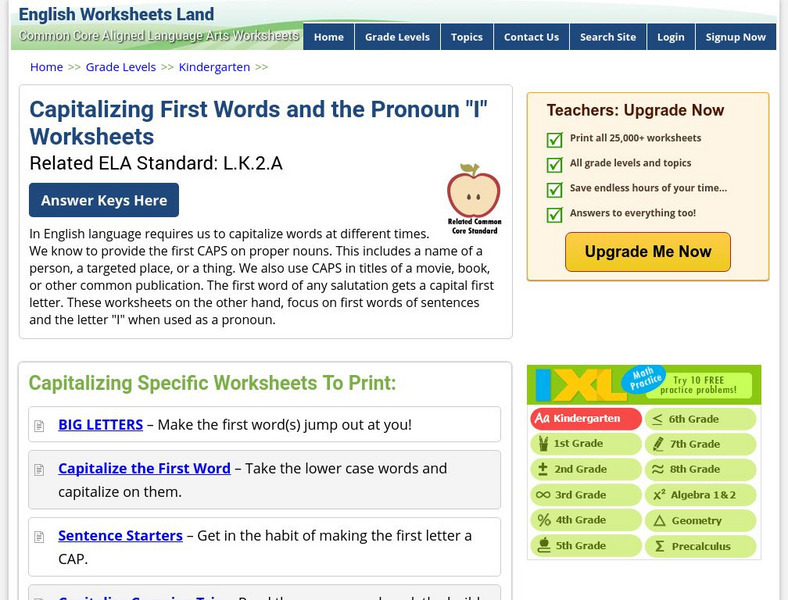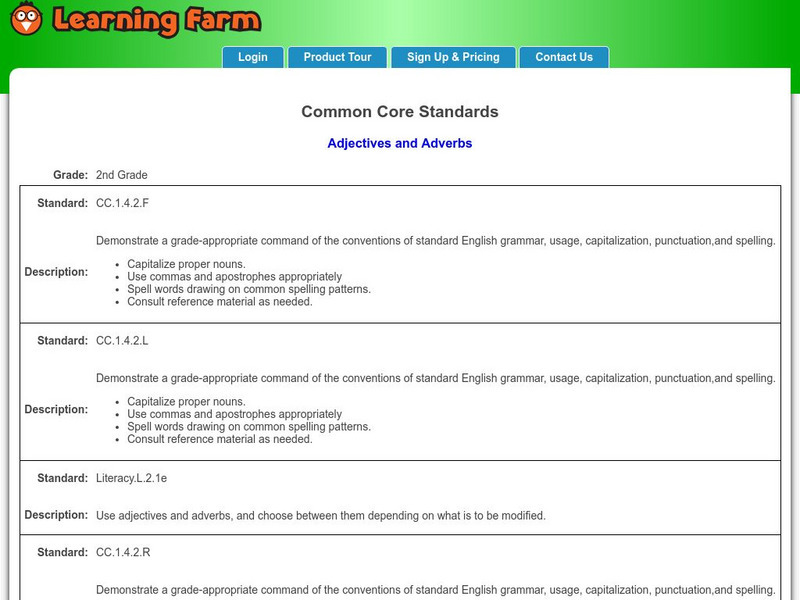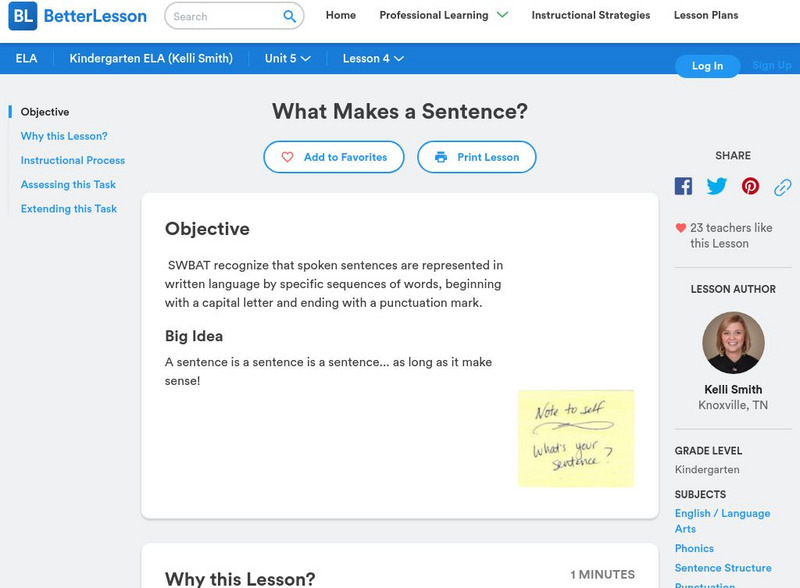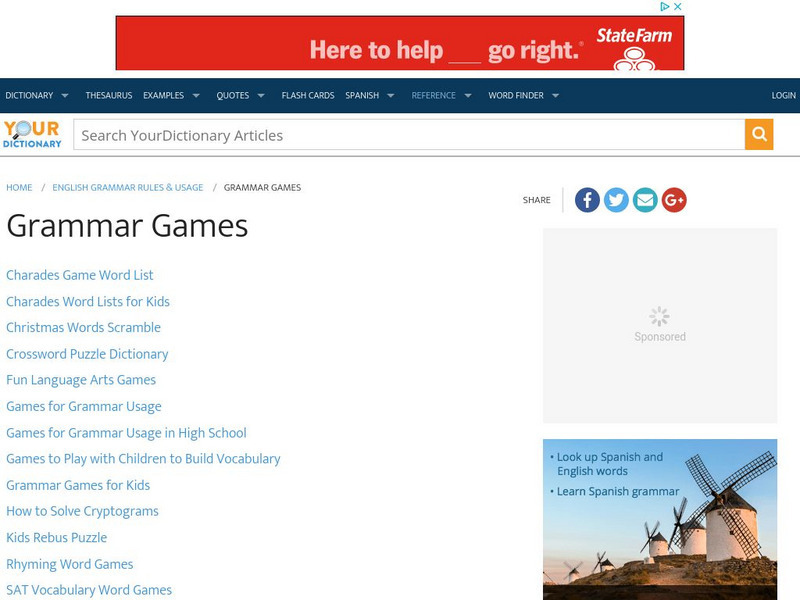Writing Fix
Writing Fix: Who/what/when/where: Circus Theme
In this lesson, Dr. Seuss' book, If I Ran the Zoo, is used as the mentor text for its use of adverbial phrases. After reading the mentor text, learners will use click the buttons with the words "Who", "What", "When", and "Where" until...
Fun Brain
Fun Brain: Grammar Gorillas
Click on the noun or verb in each sentence and check out your score! With definitions of parts of sentences for reference. With a link to other fun games for students.
PBS
Pbs: No Nonsense Grammar: Using Proper Punctuation for Titles
This video focuses on correctly punctuating titles. Small works (short stories, essays, magazine and newspaper articles, etc.) are indicated with the use of quotation marks. Larger works, such as books or movies, are indicated either...
Education Place
Houghton Mifflin: Eduplace: Noun and Pronoun Grammar Blast
Discover more about nouns and pronouns when you visit this "Grammar Blast," activity. Students have an opportunity to play a game while improving their grammar skills.
Turtle Diary
Turtle Diary: Sentence Structure Games
A collection of games for students to work on forming sentences. These games give students strategies for sentence formation.
English for Everyone
English for Everyone: Sentence Completion 17 (Low Beginning Level) [Pdf]
English for Everyone provides a printable quiz to assess the recall of basic verb tenses that are needed in beginning English.
English for Everyone
English for Everyone: Sentence Completion 15 (Low Beginning Level) [Pdf]
English for Everyone provides a printable quiz to assess the recall of basic verb tenses that are needed in beginning English.
English for Everyone
English for Everyone: Sentence Completion 2: Level 2 [Pdf]
English for Everyone provides a printable quiz to assess the application of the present progressive verb tense, a topic covered in Level 2 English. Singular and plural subjects are included in the sentences.
English Worksheets Land
English Worksheets Land: Capitalizing First Words and the Pronoun "I" Worksheets
The English language requires us to capitalize words at different times. These worksheets, on the other hand, focus on the first words of sentences and the letter "I" when used as a pronoun.
Florida Center for Reading Research
Florida Center for Reading Research: Sentence Meaning: Silly Sentence Mix Up
A lesson plan in which students use sentence strips with various phrases to create sentences. Materials are included.
Love To Know Media
Your Dictionary: 2nd Grade Lesson Plans for Forming Possessives
This article focuses on teaching 2nd graders to form possessive. It provides two complete lesson plans with activities for teaching them how to form possessives.
Learning Farm
Learning Farm: Common Core Standards Adjectives and Adverbs
View a lesson and practice using adverbs and adjectives and choosing between them depending on what is to be modified.
Better Lesson
Better Lesson: Email Clarifying Questions
At the end of this activity, young scholars will demonstrate the use of commas, clarifying questions, and a friendly letter format by sending an email. Email is part of student's lives, and it is part of the digital landscape they will...
Better Lesson
Better Lesson: What Makes a Sentence?
This lesson will help students recognize that spoken sentences are represented in written language by specific sequences of words, beginning with a capital letter and ending with a punctuation mark. This lesson is short but it allows...
Love To Know Media
Your Dictionary: Grammar Games
This is a list of 23 links to grammar games including word scrambles, charades, word puzzles, and other games.
Alabama Learning Exchange
Alex: Pass the Punctuation, Please!
During this lesson students will listen to the story, Noisy Nora by Rosemary Wells and identify punctuation used in the story. Students will also play games to strengthen knowledge of punctuation usage. They will then use the Internet to...
PBS
Pbs Learning Media: Using Commas and Quotations
Quotations and commas are two very useful punctuation tools that indicate dialogue and brief pausing in sentences. Learn how to use them correctly! [0:46]
PBS
Pbs Learning Media: How to Introduce Lists and Quotes With Colons
Colons are punctuation marks that can signal a quotation. However, to use colons correctly, whatever comes before the colon must be a complete sentence. Know when and how to use colons! [0:45]
PBS
Pbs Learning Media: Sentence Fragments
Sentence fragments can't stand alone, because they do not express a complete thought. Run-ons put two complete sentences together in one sentence without separating them. [0:35]
PBS
Pbs Learning Media: How to Link Clauses With Semicolon
Semicolons join two closely related independent clauses in a single sentence. Without these, there would be run-on sentences that no one could slow down! [0:57]
PBS
Pbs Learning Media: Using Punctuation for Breaks and Pauses
Punctuation indicates how one should read any sentence. Commas, for example, indicate when a reader should take a brief pause, either for emphasis or for comprehension. [0:40]
PBS
Pbs Learning Media: How to Punctuate Items in a Series
Another way to confuse readers or audiences is not using commas and conjunctions when listing items in a series. Always use a comma in between items in a series, and use a conjunction before adding the last item in a list. [0:44]
PBS
Pbs Learning Media: How to Use Commas With Conjunctions
Conjunctions can join two separate clauses, but sometimes they need commas. Learn how to do so correctly with this video. [0:48]


